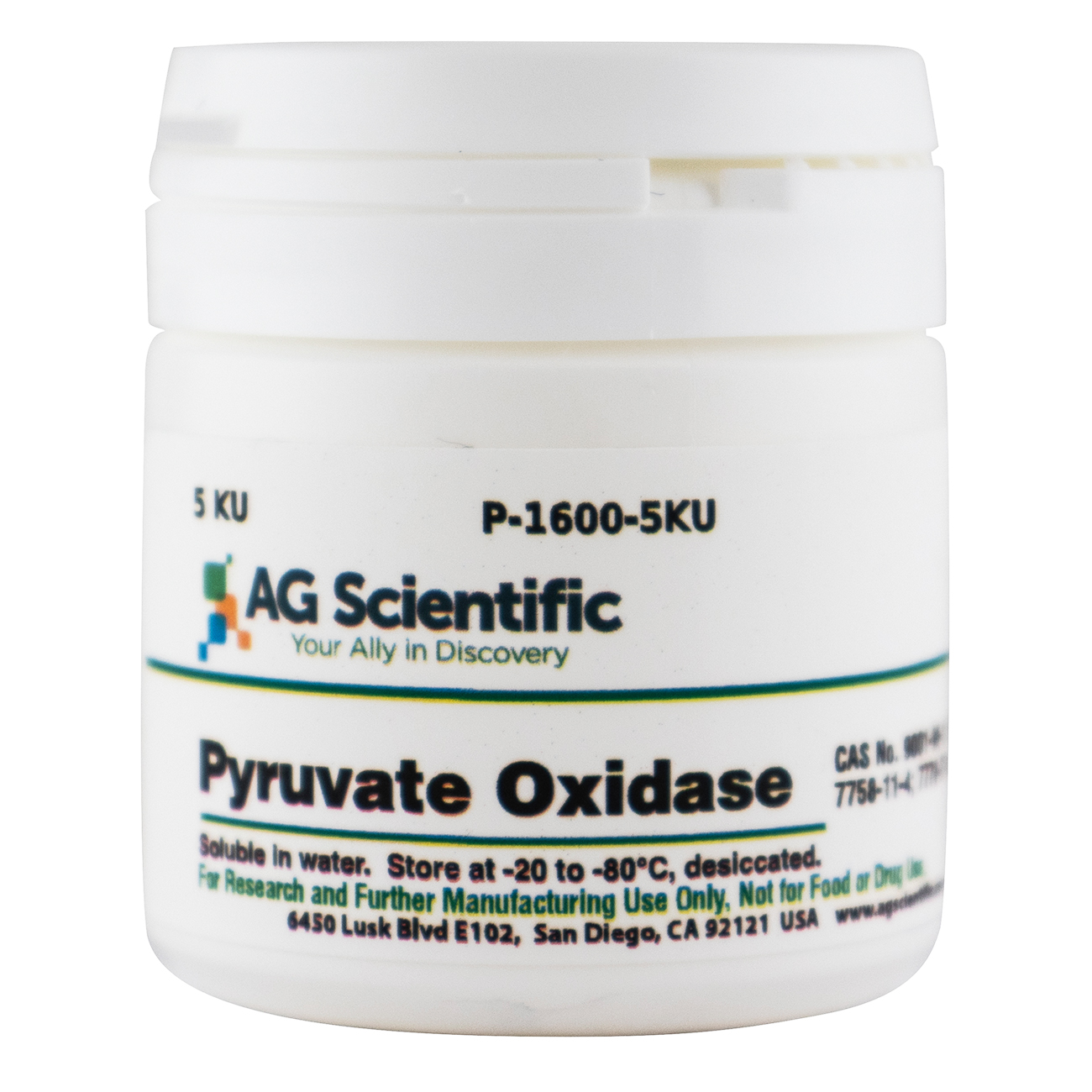Pox; Pyruvic oxidase; POPG
9001-96-1, 57-50-1, 77-86-1, 7758-11-4, 7778-77-0, 84366-81-4
Water
-20°C
Pyruvate oxidase is originated from Aerococcus viridans and used as a component of screen-printed phosphate biosensor for monitoring phosphate concentrations in a sequencing batch reactor (SBR) system. It consumes phosphate in the presence of pyruvate and oxygen and generates hydrogen peroxide, carbon dioxide and acetylphosphate.
The enzyme is a flavoprotein with the relatively tightly bound cofactors flavin adenine dinucleotide, thiamine pyrophosphate, and a divalent metal ion, with Mn2+ being the most effective.
Activity: 40 units/mg powder
One unit is defined as amount of enzyme required to generate 1 μmol of H2O2 per minute at 37°C, pH 6.5.
Contaminate Info:
- Glutamate oxalacetate transaminase (GOT) 002% by activity
- Glutamate pyruvate transaminase (GPT) 006% by activity
- Lactate Oxidase 002% by activity
- Catalase not detectable
Applications:
- Study of aerobic metabolism of bacteria
- Used for enzymatic determination of AST and ALT
- Used to monitor phosphate concentration in SBR system
Additional Reading from AG Scientific:
- Electrochemical Processes for Treating Water and Why it Matters
- Single-Use Biosensors for the Detection of Biomarkers
- Advances in Lab-on-a-Chip Technology
0.1 lbs
Research or further manufacturing use only, not for food or drug use.




